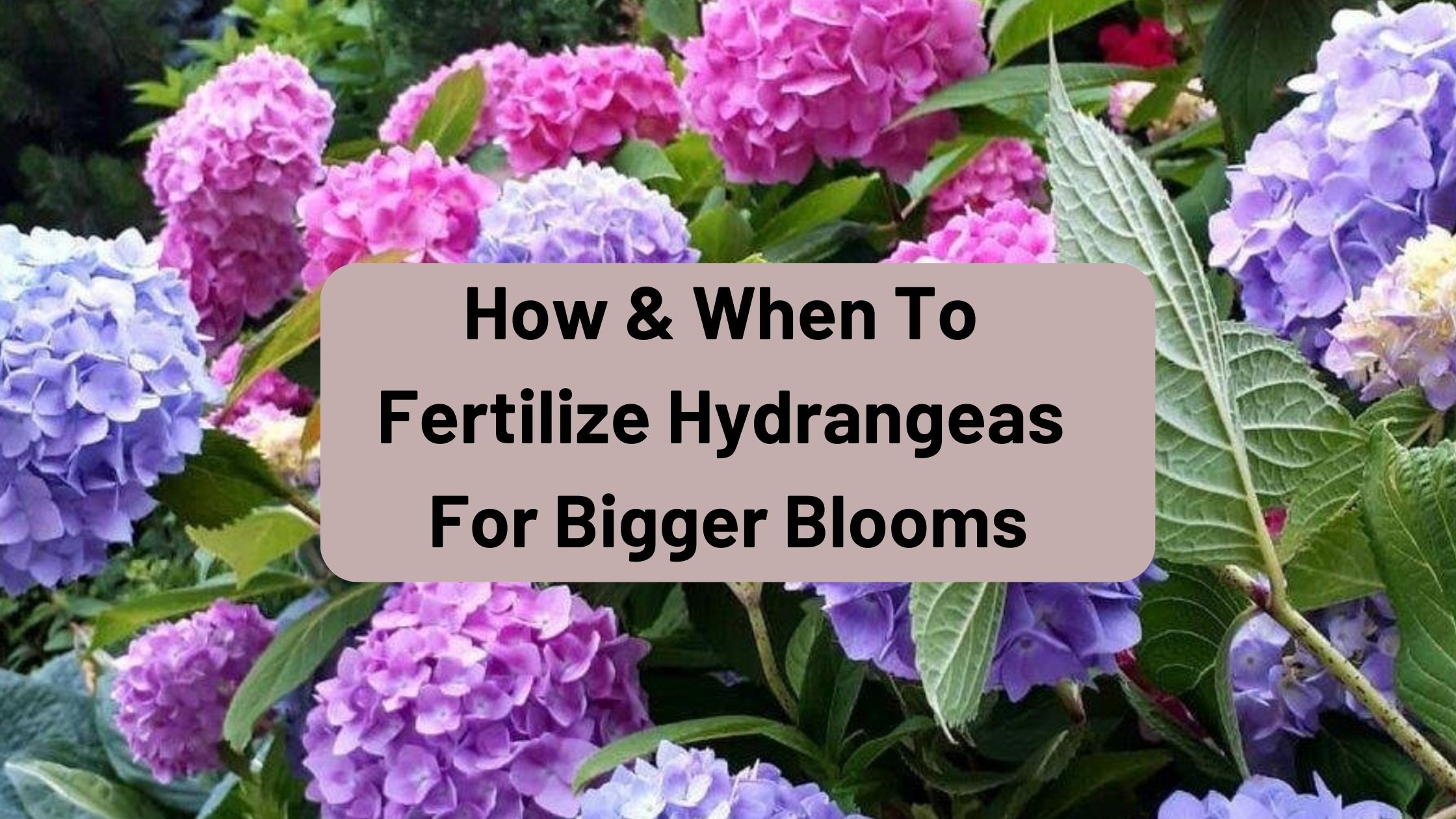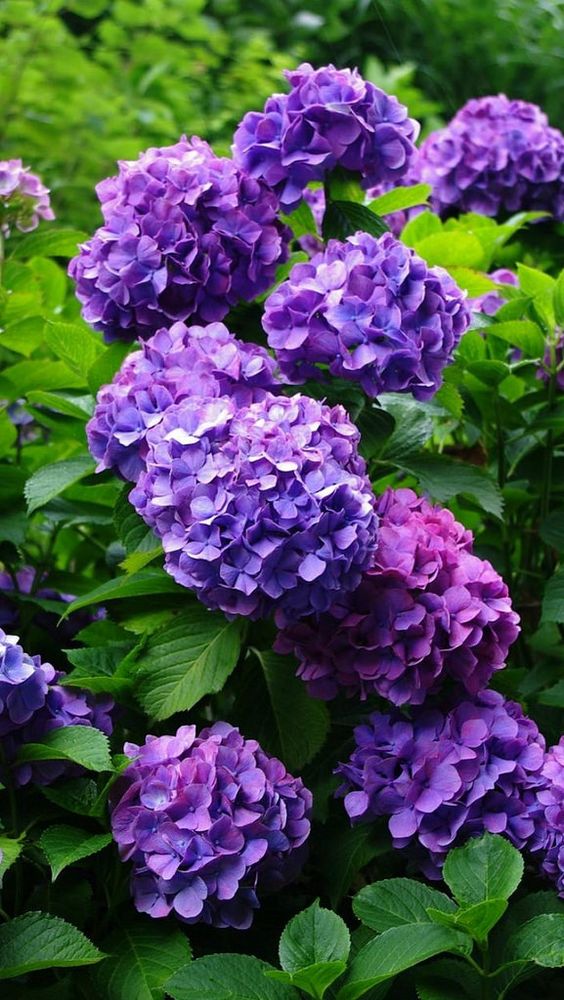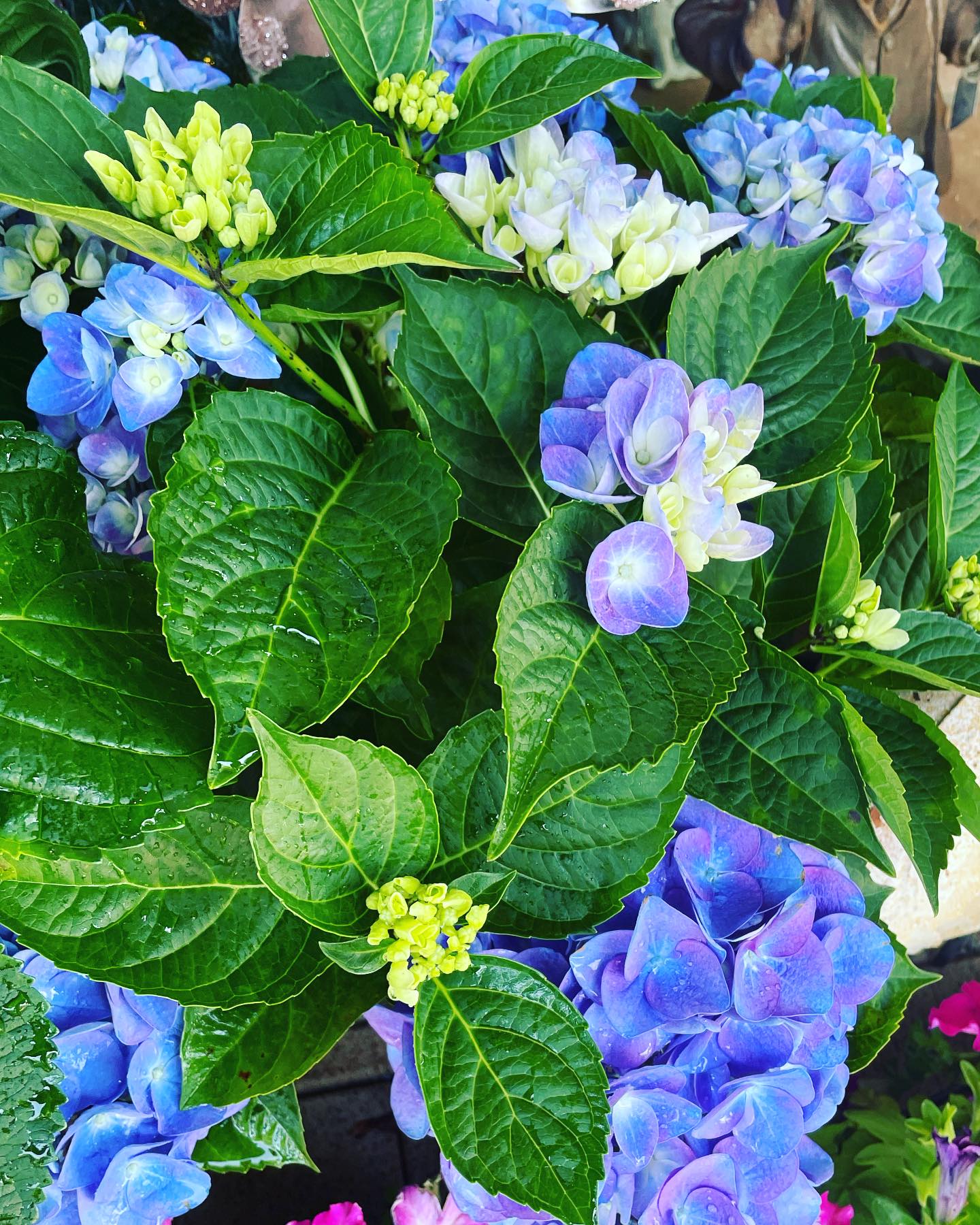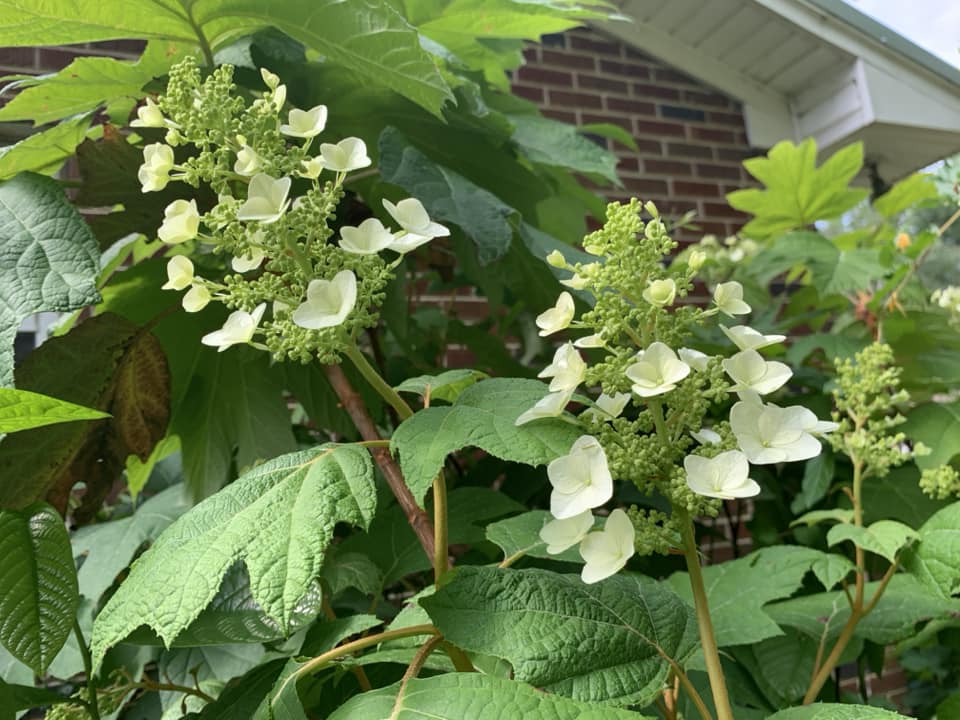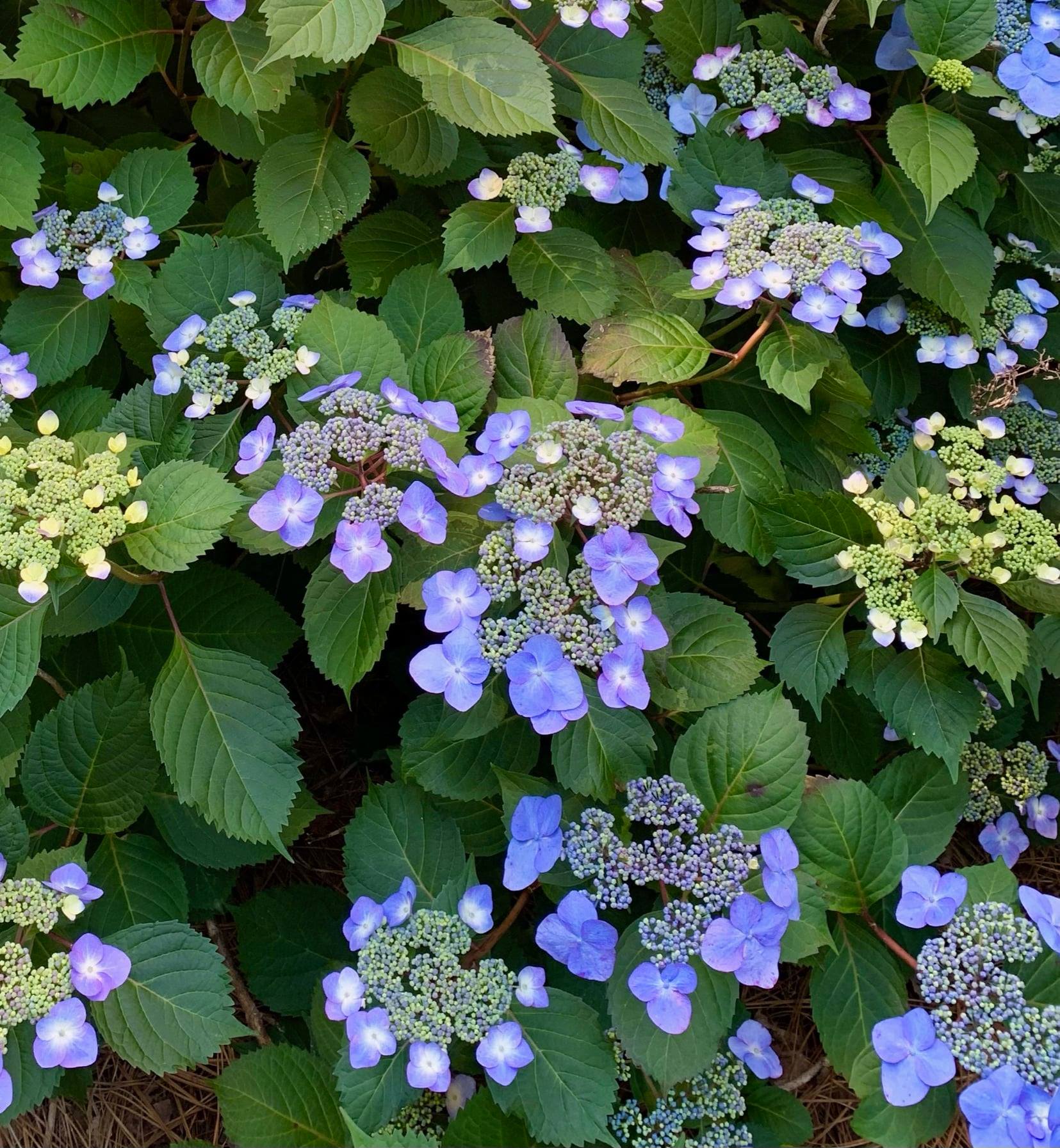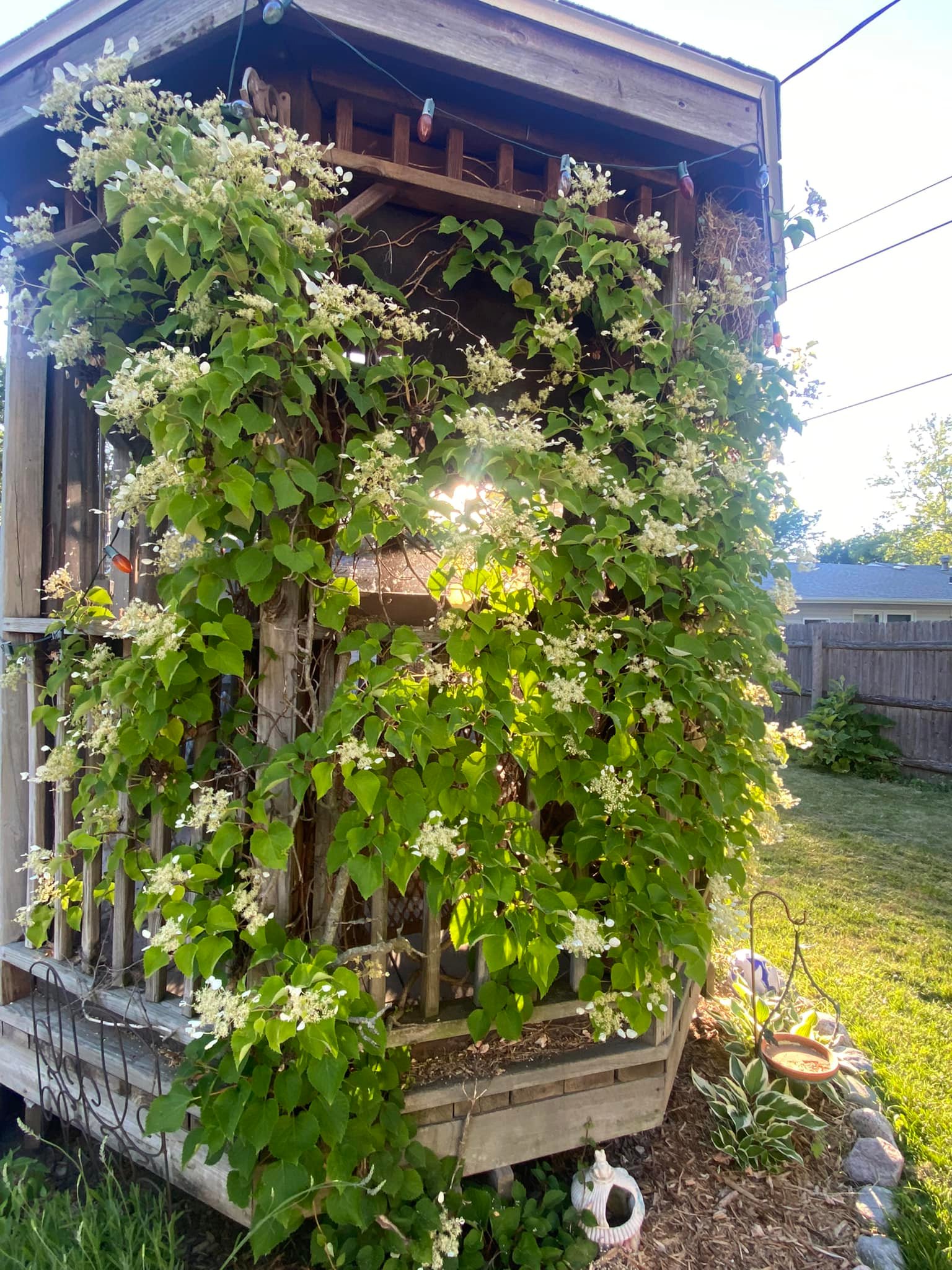Hydrangeas naturally beautify the spaces they grow in with their lush, billowy clusters of blue, pink, purple, and white blossoms. That’s not all; you can unlock the full potential of these enchanting plants and stimulate bigger and better blooms. But how, you ask?
You must understand how and when to fertilize hydrangeas for bigger blooms. Proper timing and supplying the right nutrients make a great deal of difference regarding the size and quality of hydrangeas’ blooms.
Generally, fertilize your hydrangeas in early spring, then repeat in late spring or early summer to get the best summer blooms. Below is a detailed look into fertilizing hydrangeas.
Types Of Fertilizers Suitable For Hydrangeas
Considering there are numerous types of fertilizers for plants, you must choose the ones suitable for hydrangeas. Base your decision on your hydrangea variety, the current condition of your soil, and your gardening preferences.
Here are the common types.
1. Synthetic Fertilizers
These fertilizers may be derived from natural substances but are typically altered to develop concentrations the plants need to grow quickly. The primary purpose of synthetic fertilizers is to benefit the plants; they are not usually meant to boost soil structure.
2. Organic Fertilizer
If you’d rather not use synthetic fertilizers, go for organic fertilizers derived from natural sources, such as compost, well-rotted manure, or organic materials like bone meal and fish meal. Organic fertilizers will supply your hydrangeas with the essential nutrients needed for bigger blooms and overall health and improve soil structure and microbial activity.
3. Liquid Fertilizer
Liquid fertilizers come in liquid concentrate or soluble powder forms and are mixed with water before application. They can provide a quick nutrient boost, making them suitable for foliar feeding or supplementing regular granular fertilization.
4. Acidic or Alkaline-Adjusting Fertilizer
Control the flower color of mophead and lacecap hydrangeas (H. macrophylla) with specialized fertilizers designed to adjust soil pH. These fertilizers contain compounds like aluminum sulfate to lower the pH for blue flowers or lime to raise the pH for pink flowers.
5. Specialty Hydrangea Fertilizer
You can also find fertilizers explicitly formulated for hydrangeas in some garden centers. These products may contain additional micronutrients and trace elements tailored to hydrangea needs. While not essential, they can be convenient options if you want to simplify the fertilization process.
6. Bulb or Flowering Plant Fertilizer
Fertilizers designed for bulbs or flowering plants can also suit hydrangeas, particularly those that bloom on new growth (e.g., paniculata hydrangeas). These fertilizers typically have a balanced N-P-K ratio and provide flowering nutrients.
7. Rhododendron and Azalea Fertilizer
Fertilizers labeled for rhododendrons and azaleas often work well for hydrangeas, especially mophead and lacecap varieties. These products typically contain the right mix of nutrients and pH-adjusting components for optimal hydrangea growth and flower color development.
Note
Make sure the NPK ratio in your hydrangea fertilizer contains more phosphorus for better and bigger blooms.
Related Posts: Best Hydrangeas For Full Sun
When To Fertilize Hydrangeas
The quality and size of hydrangea blooms significantly depend on when you fertilize these flowers, which is why you must get your timing correctly.
a) Early Spring
Fertilize in early spring when you see the first signs of new growth, typically when the buds begin swelling and the first leaves emerge. Use a hydrangea-formulated fertilizer or a well-balanced, gradual-release variety.
This initial spring feeding provides the necessary nutrients for strong, healthy growth and flower bud development.
b) Late Spring or Early Summer
Your hydrangeas can greatly benefit from a second round of fertilization in late spring, typically around mid to late May or early summer. At this point, the hydrangeas are actively growing, and additional nutrients can support their development and the formation of flower buds.
c) Late Summer to Early Fall
You can help your hydrangeas get ready for winter with late summer to early fall feeding, especially if you have mophead and lacecap hydrangeas, as they set their flower buds during this time. However, fertilizing during these months can stimulate new growth that may not have enough time to harden off before winter, making the plants more vulnerable to cold weather damage.
Use a low-nitrogen, high-phosphorus fertilizer during this period to promote flower bud formation and a robust display the following year. Late-season fertilization should focus on maintaining the plant’s health rather than encouraging new vegetative growth.
Read More:
Fertilizer Requirements For The Common Types of Hydrangeas
There are over 70 types of hydrangeas, but we will only focus on how to fertilize the common types.
i) Bigleaf Hydrangeas (Hydrangea macrophylla)
These hydrangeas have pink, white, or blue round flower clusters but also purple and red ones. You will see its flowers from the late days of spring to the early days of summer, with a chance of a rebloom in late summer.
Fertilize them with a slow-release, balanced fertilizer in early spring and support continued growth and blooming with a second round of fertilizer in early summer. Encourage vibrant blue or purple blossoms by adding aluminum sulfate to the soil and incorporating garden lime for those lovely pink hues.
ii) Panicle Hydrangeas (Hydrangea paniculata)
This cold-tolerant type suits you if you want the most low-maintenance hydrangea. It loves to be overfed since it can generate weak stems, so fertilize your panicle hydrangeas in late winter or early spring with a slow-release fertilizer with lower nitrogen.
If necessary, fertilize again in early summer or late spring. Its cone-shaped flower clusters often turn pink or reddish as they age. Although they are less fussy about soil pH, plant them in neutral or faintly acidic soil.
iii) Oakleaf Hydrangeas (Hydrangea quercifolia)
Oakleaf hydrangeas are characterized by their oak-shaped leaves. They also stand out for their cone-shaped flowers in mid-spring to mid-summer that turn orange, red, purple, and pink as the season progresses. Feed these hydrangeas with phosphorus-rich fertilizer in spring for better blooms.
Plant them in neutral or somewhat acidic soil. They do best with some sun but provide some shade in hot climates.
iv) Smooth Hydrangeas (Hydrangea arborescens)
This hydrangea also flourishes in slightly acidic to neutral soil and produces large, white, globe-shaped flower clusters. Although some shade won’t hurt them, smooth hydrangeas blooms thrive with more sunlight (at least 4 to 6 hours every day).
Fertilize them in spring with a fertilizer with double the phosphorus content for bright and big flowers.
v) Mountain Hydrangeas (Hydrangea serrata)
These hydrangeas are related to bigleaf hydrangeas. The soil composition affects their flowers with acidic soil, making the blooms bluer and alkaline soil producing pink flowers.
Get the most pleasant blooms from late spring to summer by fertilizing your mountain hydrangeas with phosphorus-rich slow-release fertilizer in spring.
vi) Climbing Hydrangeas (Hydrangea anomala petiolaris)
Climbing hydrangeas are excellent climbers for walls or trellises, growing to 3-5 ft wide and 30-60 ft high. This hardy plant grows in shade or sun and prefers neutral or somewhat acidic soil.
It boasts fragrant white flowers with yellow and cream shades in summer and spring. Stimulate excellent blooms and growth by feeding them with a well-balanced fertilizer in springtime and early summer.
How to Fertilize Hydrangeas (Application Methods)
The fertilizer type and timing are vital for hydrangea fertilization, but so is proper application. Here are the available application methods.
a) Broadcast Application
Broadcast granular fertilizers on the soil surface within the dripline of the hydrangea (the area directly below the outermost branches) for even distribution. Be cautious not to pile the fertilizer against the base of the plant, as this can lead to root burn.
b) Depth Application
You can also work the fertilizer into the soil by creating small holes around the base of the hydrangea and evenly distributing the fertilizer. Gently watering the fertilized area helps with nutrient penetration.
c) Liquid Fertilizer
Dilute liquid fertilizer, then apply it directly to the soil surrounding your hydrangeas.
d) Topdressing with Compost
Consider topdressing your hydrangeas with compost. Simply spread a layer of compost over the soil surface, taking care not to smother the plants to improve soil structure and gradually release nutrients.
Additional Tips
- Water deeply and regularly, mainly during dry spells, for consistently moist soil.
- Apply organic mulch around your hydrangeas, spreading it to a depth of 2-3 inches.
- Prune your hydrangeas at the right time (which depends on the hydrangea variety) to avoid accidentally removing flower buds. For instance, most mophead and lacecap hydrangeas bloom on old wood (the flower buds set in late summer and fall for the following year), so prune them in late winter or early spring. In contrast, oakleaf and paniculata hydrangeas flower on new growth, so trim them in late winter or spring’s dawn.
- Hold off on fertilization during periods of drought or extreme heat.
- Regularly fertilize your hydrangeas based on their specific needs and type for healthy and vigorous growth.
- Promptly address pest issues or nutrient deficiencies to ensure the overall health of your plants.
Summary
The secret to bigger and better hydrangea blooms is understanding the unique requirements of your specific hydrangea type, choosing the right fertilizer, and applying it at the appropriate times. Therefore, follow the fertilization guidelines above and maintain proper soil pH, watering, and pruning for a lush, vibrant hydrangea bush.

Hey there, I’m Derek Schew, a writer for Lawnholic.com, where we cover everything and anything related to lawns. As someone who’s spent countless hours tending to my own lawn, I’m passionate about sharing my knowledge and helping others achieve the perfect yard. From lawn care tips to product reviews, I’m committed to providing our readers with the most accurate and up-to-date information available. So whether you’re a seasoned lawn enthusiast or just getting started, I invite you to join our community and discover the joys of a lush, green lawn.

